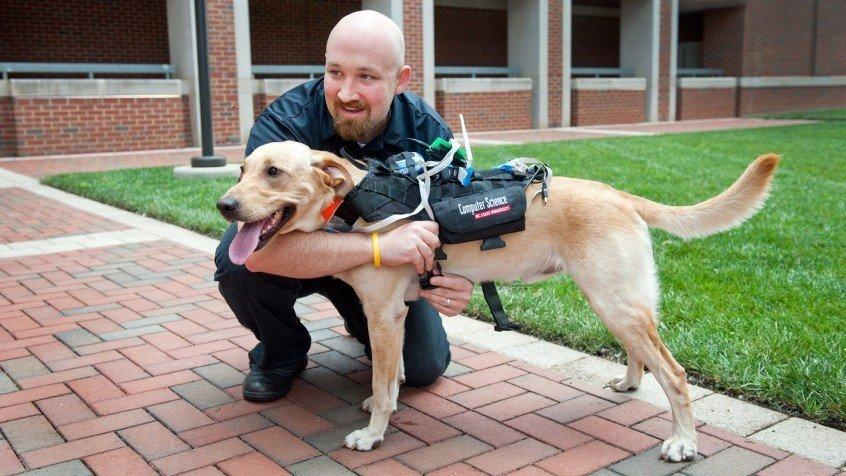If a dog is man’s best friend, the Cyber-Enhanced Working Dog harness could bring canines and humans closer than ever before. Created by researchers at North Carolina State University, the Cyber-Enhanced Working Dog harness allows for communication between dogs and humans by means of a computer.
Not only does the harness, which is black and vest-like in appearance, act as a way for people to give commands to dogs, but it also collects behavioral information from the dog. According to David Roberts, a professor at North Carolina State and one of the main researchers on the project, the idea is for the harness to act as a “two-way remote” between dogs and humans.
Though dogs cannot speak, there are various bodily functions and environmental factors that hint at their stress levels and other emotional states. The harness measures heart-rate, body temperature, movement and more, giving the handler an accurate picture of what the dog is experiencing.
Going in the other direction, the handler can communicate with the dog by means of vibrating motors and speakers. Dogs can be trained to respond to multiple signals or a combination of voice commands and vibrations.
The harness is designed to have applications for police and military use, as well as possible applications for guide dogs and the average pet owner. The harness can be used at a long range, can be tailored to fit the needs of the handler and can provide consistency in the canine training process.
In addition, the benefit of detecting and minimizing stressors is important, because stress is a main cause for the early retirement of service dogs.
Researchers have already teamed up with projects aimed at making search -and-rescue efforts more high-tech and effective. One of these projects is the Smart Emergency Response System project, which brings together over 20 research groups that are aimed at improving emergency response. Dogs are a big part of this, along with robots and drones. With the training benefits, the harnessis an ideal model for the future of search and rescue in addition to the ability to add a camera and test the environment from a distance.
However, there is still work to be done as the harness technology moves past the prototype phase of innovation. The size and weight of the harness is something that the researchers are working to reduce. The current model is approximately four pounds and fairly bulky. The research team is working to decrease the weight of the harness without decreasing its functionality, so that it can work on a variety of dog breeds and sizes.
Work is also being done to increase the current battery life of eight hours, so that service dogs will not have to stop and recharge while on the job.
Technology will never replace the bond between humans and dogs. However, with new technology like this, there may come a time when humans can communicate with dogs more effectively and improve aspects of the working dog’s life.
Photo courtesy of NPR






